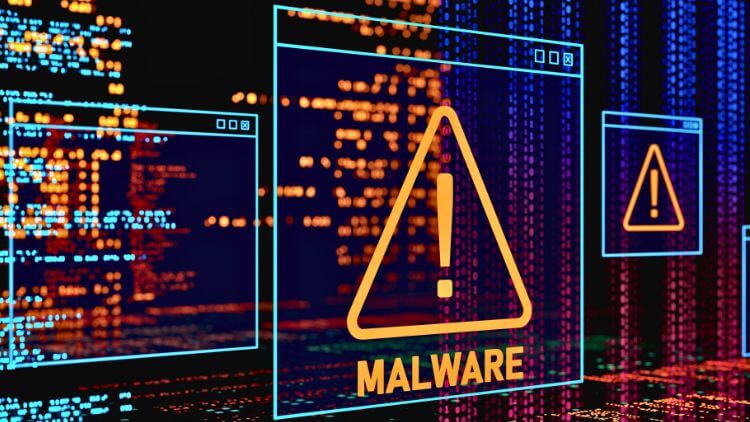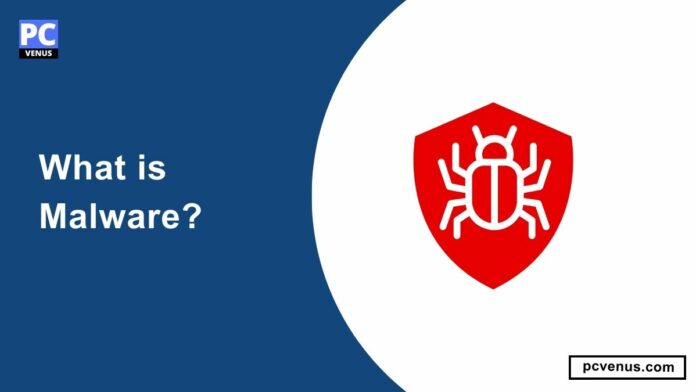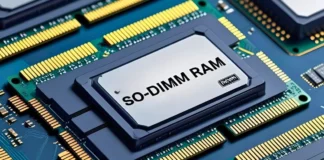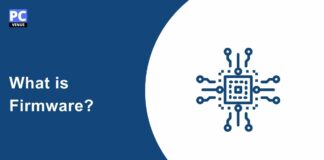Malware poses a significant threat to individuals, businesses, and even governments worldwide.
Technological advances have enabled remote access and control of devices from a single point. However, this also increases the potential for misuse and unauthorized access. As a result, keeping personal devices secure has become increasingly challenging.
It is important for users to take measures to protect themselves and their devices from attacks that exploit remote access vulnerabilities.
Implementing proper authentication protocols, using firewalls, keeping software updated, and exercising caution when granting access can help guard against threats. Knowledge of security best practices is key for safety in an interconnected world.
This article will explain what malware is and how it can affect us negatively. It will focus on the threats that malware poses to our privacy, security and experience of using technology. The goal is to increase understanding of malware and its harmful effects.
What is Malware
Malware, short for malicious software, refers to any software or code intentionally designed to harm or exploit computer systems, networks, or devices. Cybercriminals create malware to steal data, cause damage, or gain unauthorized access to sensitive information.
To protect against malware, follow these steps:
- Use antivirus software.
- Regularly update your software.
- Practice safe browsing habits.
- Educate yourself about potential risks.
Types of Malware
Various forms of malware exist, including viruses, worms, trojans, ransomware, spyware, adware, etc each with distinct characteristics and infiltration methods.
1. Viruses:
Viruses are malicious programs that attach themselves to clean files and replicate when the infected file is executed. They can cause damage to files, software, and the overall system.
2. Worms:
Worms are self-replicating malware that spread through networks and exploit security vulnerabilities. They often consume network bandwidth and can cause system slowdowns and disruptions.
3. Trojans:
Trojans are malware that disguise themselves as legitimate software or files and trick users into installing or executing them. Once activated, Trojans can perform unauthorized actions, such as stealing sensitive information or providing remote access to attackers.
4. Ransomware:
Ransomware is a particularly dangerous type of malware that encrypts files on a victim’s computer or network, making them inaccessible. Attackers then demand a ransom payment in exchange for the decryption key to regain access to the files.
5. Spyware:
Spyware is designed to secretly gather information about a user’s activities without their knowledge or consent. It can monitor keystrokes, capture screenshots, and collect sensitive data, posing a significant threat to privacy and security.
6. Adware:
Adware is malware that displays unwanted advertisements on a user’s device. It often comes bundled with legitimate software and generates revenue for attackers through pay-per-click schemes or affiliate marketing.
7. Rootkits:
Rootkits are malware that provides unauthorized access to a computer system. They can hide malicious activities, such as backdoors or keyloggers, from detection by security software.
8. Keyloggers:
Keyloggers are malware that record keystrokes on a device, capturing sensitive information such as passwords, credit card numbers, and personal data. Attackers can then use this information for malicious purposes.
9. Botnets:
Botnets are networks of infected computers, often controlled by a central command and control server. They can be used for various malicious activities, such as launching DDoS attacks, sending spam emails, or distributing malware.
10. Fileless Malware:
Fileless malware resides in a computer’s memory and does not leave traces on the hard drive. It can exploit vulnerabilities in software or operating systems and is challenging to detect and remove.

How does malware work?
Malware works by exploiting vulnerabilities in computer systems and networks to gain unauthorized access, steal information, or cause damage.
1. Infection Process:
Entry Points: Malware can enter a system through various entry points, such as malicious email attachments, infected websites, or compromised software downloads.
Exploitation Techniques: Once inside a system, malware exploits vulnerabilities in operating systems, applications, or network protocols to gain control.
2. Malicious Activities:
Data Theft: Malware can steal sensitive information, such as login credentials, credit card details, or personal data, by monitoring keystrokes, capturing screenshots, or accessing stored files.
System Manipulation: Some malware modifies system settings, alters or deletes files, or installs additional malicious software to manipulate the behavior of the infected system.
Unauthorized Access: Certain types of malware, such as backdoors or remote access trojans (RATs), create hidden pathways for attackers to gain remote control over infected systems.
3. Persistence Mechanisms:
Hiding Techniques: Malware often employs techniques to avoid detection and removal, such as disguising itself as legitimate files, using rootkits to hide its presence, or employing fileless techniques that reside only in system memory.
Self-Replication: Some malware, like viruses and worms, can self-replicate and spread to other devices or networks, increasing their reach and potential impact.
Features and capabilities of Malware
1. Self-Replication:
Many types of malware, such as viruses and worms, have the ability to self-replicate. They can create copies of themselves and spread to other systems or devices, increasing their reach and potential impact.
2. Stealth and Evasion Techniques:
To avoid detection by antivirus programs and security measures, malware often employs various techniques to remain hidden. This includes disguising its code, using encryption, or modifying its behavior to evade detection.
3. Persistence:
Malware is designed to maintain a foothold on infected systems for as long as possible. It achieves persistence by creating startup entries, modifying system settings, or hiding itself in system processes or files.
4. Remote Access and Control:
Many types of malware, including trojans and remote access trojans (RATs), provide attackers with remote access and control over infected systems. This allows them to execute malicious commands, steal data, or use the compromised system as a launchpad for further attacks.
5. Data Theft and Exfiltration:
Malware can be designed to steal sensitive data, such as login credentials, financial information, or personal details. This stolen data is often exfiltrated to remote servers controlled by the attackers, who can then exploit it for financial gain or other malicious purposes.
6. Keylogging and Screen Capture:
Some types of malware, particularly spyware, have the ability to capture keystrokes or take screenshots of a user’s activities. This enables attackers to gather sensitive information, such as passwords or credit card details, without the user’s knowledge.
7. Botnet Formation:
Certain types of malware, like botnets, can infect multiple devices and coordinate them to form a network of compromised systems under the control of the attacker. This network, known as a botnet, can be used for various purposes, including launching distributed denial-of-service (DDoS) attacks or sending spam emails.
8. File Encryption:
Ransomware, a particularly devastating type of malware, encrypts files on the victim’s system, making them inaccessible until a ransom is paid. The encryption process and the decryption key are controlled by the attackers, who demand payment in exchange for restoring access to the encrypted files.
9. Polymorphism:
To evade detection by signature-based antivirus software, some malware employs polymorphic techniques.
How malware can be utilized
- Phishing Attacks:
- Cybercriminals send deceptive emails or messages, pretending to be from trusted sources.
- Malware embedded in these messages exploits system vulnerabilities, leading to data breaches or financial loss.
- Drive-by Downloads:
- Malicious websites automatically download malware onto users’ devices without their consent.
- This occurs when users visit compromised sites or click on harmful links.
- Botnets:
- Malware creates a network of infected devices (botnet).
- Cybercriminals control these devices for activities like DDoS attacks or spam emails.
- Data Theft:
- Malware specifically targets and steals sensitive information (personal, financial, or intellectual).
- Stolen data can be sold or used for identity theft.
- Ransomware Attacks:
- The malware encrypts files and demands a ransom for the decryption key.
- Cybercriminals extort money by threatening data deletion or exposure.
- Espionage:
- Nation-states or advanced groups use malware for espionage.
- Targets include government agencies, corporations, or individuals for classified information or trade secrets.
Impact and consequences of malware
1. Financial Loss:
One of the most immediate and tangible consequences of malware is financial loss. Malware can infiltrate our devices, compromising sensitive information such as credit card details, online banking credentials, and personal identification. Cybercriminals can then exploit this data to commit fraudulent activities, resulting in significant financial damage to individuals and organizations alike.
2. Data Breaches:
Malware often serves as a gateway for hackers to gain unauthorized access to computer systems and networks. Once inside, they can launch data breaches, stealing valuable and confidential information. The consequences of such breaches can be catastrophic, leading to reputational damage, legal consequences, and potential legal actions from affected parties.
3. System Disruption and Downtime:
Malware is frequently designed to disrupt the normal functioning of computer systems and networks. It can cause frequent crashes, slow down overall performance, and even render devices inoperable. The consequences include lost productivity, decreased efficiency, and substantial financial costs required to restore and repair affected systems.
4. Privacy Invasion:
Malware often incorporates spyware and keyloggers, enabling unauthorized individuals to monitor online activities and steal sensitive information. This invasion of privacy can have severe consequences, leading to identity theft, blackmail, or even the exposure of personal information.
5. Ransomware Attacks:
The rise of ransomware has emerged as a particularly devastating consequence of malware. Ransomware encrypts a user’s files, holding them hostage until a ransom is paid. This type of attack can cripple businesses, government organizations, and even hospitals, where critical data and systems are held captive, potentially putting lives at risk.
6. Loss of Trust and Damage to Reputation:
Organizations that fall victim to malware attacks can suffer significant reputational damage. Customers may lose trust in the affected entity, fearing their personal information is no longer safe. Rebuilding trust can be a lengthy and challenging process, impacting the affected organization’s operations and bottom line.
Different ways to protect your PC from malware
1. Install and Update Antivirus Software:
Use reputable antivirus software to detect and remove malware. Ensure that it is regularly updated to have the latest virus definitions and security patches.
2. Enable a Firewall:
Activate a firewall on your PC to monitor and control incoming and outgoing network traffic. This can help block unauthorized access and protect against potential malware threats.
3. Keep Your Operating System Updated:
Regularly install updates and patches for your operating system. These updates often include security enhancements that protect against known vulnerabilities.
4. Be Cautious with Email Attachments and Links:
Exercise caution when opening email attachments or clicking on links, especially if they are from unknown or suspicious sources. These can be common vectors for malware infections.
5. Use Strong and Unique Passwords:
Create strong passwords for your accounts and avoid using the same password for multiple accounts. This can prevent unauthorized access to your PC and accounts, reducing the risk of malware attacks.
6. Enable Automatic Software Updates:
Configure your software applications, including web browsers, to update automatically. This ensures that you have the latest security patches and reduces the chances of malware exploiting vulnerabilities.
7. Practice Safe Browsing Habits:
Avoid visiting suspicious websites or clicking on unknown links. Stick to reputable websites and be cautious when downloading files from the internet.
8. Regularly Back Up Your Data:
Create regular backups of your important files and data to an external storage device or cloud storage. In case of a malware infection, you can restore your files to a clean state.
9. Use a Virtual Private Network (VPN):
Consider using a VPN when connecting to public Wi-Fi networks. A VPN encrypts your internet traffic, making it more difficult for malware to intercept your data.
10. Educate Yourself and Stay Informed:
Stay updated on the latest malware threats and security practices. Educate yourself about common phishing techniques and other tactics used by cybercriminals to target users.
FAQs
Can antivirus software completely protect against all types of malware?
While antivirus software is indeed essential, it cannot guarantee absolute protection against all types of malware. Regular updates to the software and user vigilance are equally crucial to maintaining a secure system.
How can I recognize a phishing email?
Look for suspicious email addresses, grammatical errors, and requests for sensitive information. Avoid clicking on links or downloading attachments from unknown sources.
What should I do if my system is infected with malware?
Disconnect from the Internet: Isolate the infected system to prevent further spread of malware. Unplug network cables or disable Wi-Fi.
Run a Full Antivirus Scan: Use reliable antivirus software to scan your entire system. Remove any detected malware. Regularly update your antivirus definitions.
Seek Professional Assistance: If the infection is severe or complex, consult a cybersecurity professional. They can provide expert guidance and help remove persistent threats.
Consider Restoring from a Backup: If critical files are compromised, restore them from a clean backup. Regular backups are essential for data recovery.
Are Mac systems immune to malware?
It is a common misconception that Mac computers are completely immune to malware infections. In the past, Macs were less frequently targeted than Windows PCs due to their lower market share. However, as Macs have become more popular, malware designed to infect them has emerged. So while the risk is lower compared to Windows, Macs are still vulnerable.
How can businesses prepare for AI-powered malware?
Businesses should invest in advanced threat detection systems, employee training, and regularly update cybersecurity protocols to stay ahead of evolving threats.




